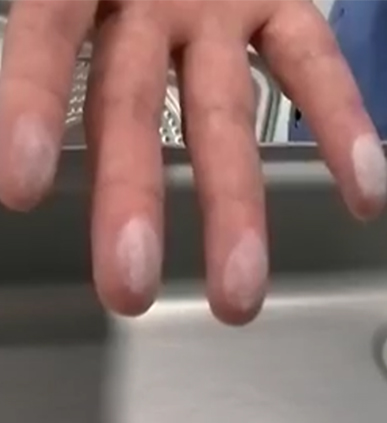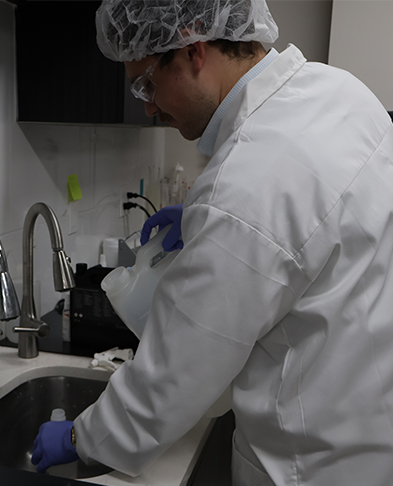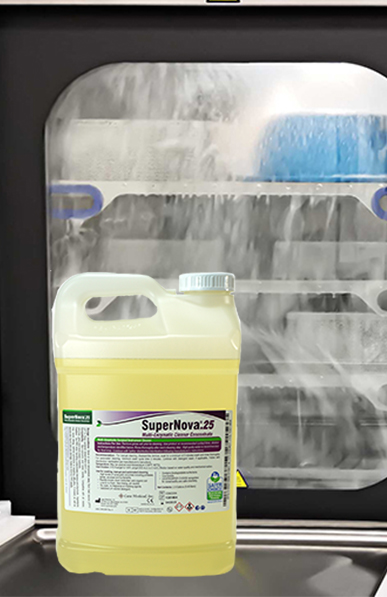Too many possibilities with no clear solution
Many of us have tried to solve the troubling mystery of the “white mist” or “white powdery residue” found on the surfaces of medical devices. But it is not unique to instrument processing, in fact it is an everyday common occurrence found on glassware, cutlery, and even on clean clothes. When it is found on clothes after washing the cause is often undissolved detergent, fabric softener buildup, or a dirty washing machine, and even residue from a water softener installed to treat the hard water. Reducing the amount of detergent can alleviate the problem but not solely. We’ve tried it in our lab by isolating each variable. Using less chemicals by adding more water or rinse time in the washer may be one answer. But there is much more to the story…We have lists of possible causes and contributing factors, but how to avoid it remains a mystery to many, until now.


Water quality is important, but there’s more to the story
Water quality is an important “suspect” or contributor to surface residue. Limescale present in water is composed of dissolved minerals that leave behind calcium and magnesium as the water evaporates when heated. Limescale itself is not harmful to your health. However, it can reduce water pressure, clog pipes, and make cleaning more difficult. When it comes to processing medical devices, water impurities can stain instruments and even inactivate disinfectants. Add chlorides and now the elevated pH and the chemical additives lead to pitting and corrosion. Even steam from a facility’s steam generator can contain total dissolved solids which generate poor steam quality and the presence of particles in steam that may lead to corrosion and scaling. In fact, when the steam vapor evaporates, it can leave behind white residue. That’s true for the washer too, during thermo-disinfecting cycles with temperatures up to 90 degrees Celsius or more.
The results of our investigation, something we already have
We have been investigating the cause or causes of the powdery residue commonly found on medical devices including sterilization containers, yes ours included, and even wrapped trays. We found that there are many causes. In our laboratory, we’ve been evaluating each possible cause for several months now to determine how the residue can develop, but more importantly how the residue can be avoided. We have a steam sterilizer and a STERRAD sterilizer. Our hypothesis was that hydrogen peroxide residue might be an additional cause in addition to the detergent or the water because of chemical exposure during sterilization. Yes, that might be true in some cases. However, this is where our recipe for success was proven to be very simple, easily implemented, cost effective, and sustainable, too. Use filtered water for cleaning and RO water for rinsing. Select our Super-Nova multi-enzymatic detergent for processing devices in the automated washer. Abracadabra, we found with less chemicals, lower temperature, and a thorough rinse with high purity water, no residue, or discoloration was found. You may not need anything else.

Connect with Case Medical on social media for more content!
LinkedIn
FaceBook
Visit us in Boston, Sunday-Tuesday April 6th-8th, to learn more about our products and services. Case Medical is a U.S. EPA Safer Choice Partner of the Year and a Frontrunner in the Chemical Footprint Project. We have several innovative products to show you so don't forget to stop by our booth #824 at AORN during exhibit hours.
Kindest Regards,






